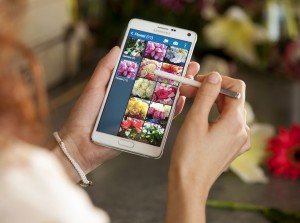Over these past months, smartphone manufacturers and the technology press have been going on about smartphones that are described as “selfie” smartphones. But what are they and what is this trend?
Like most of the consumer-technology companies, these companies are pitching the products at young people who are wanting to take many “selfies” which are pictures of themselves. This is mainly to provide the pictures that can be thrown up on Facebook, Instagram or other similar social networks or used as “avatar” images that are used to identify people on many games, instant-messaging and social-networking services.
Most smartphones have a front-facing camera along with a rear-facing camera but, in a lot of cases, the rear-facing camera has higher photo-taking abilities than the front-facing camera. This is because the front-facing camera has been purposed primarily for videocalls using 3G, Skype or similar services and has a resolution that usually maxes out at 3 Megapixels. As well, the lens systems in these cameras typically is a fixed-focus lens that may not yield good-quality pictures.
Some people get around this by typically having someone else take a picture of themselves using the rear-facing camera. This may range from another person in their group taking the picture or them roping in a stranger to immediately become familiar with the phone’s camera app and take that group picture. Or they may use other tricks like using a mirror or using the phone at arm’s length to take a rough shot.
What these “selfie” smartphones are all about is that they have a front-facing camera that is optimised to turn out high-quality still pictures along with logic to make the act of taking these pictures easier. The cameras will typically have resolutions of at least 5 Megapixels and, in some cases, there are some phones emanating from China that have 2 13-megapixel cameras. The lenses in these cameras even are optimised to take the best selfies by using a wide-angle design. Some of the Android phones implement camera logic to take improved shots with the front camera like removing blemishes for example or managing the rear camera to take those selfies like implementing a self-timer.
Personally, I would look towards using whatever post-processing functionality like cropping to get the picture right before tendering it to that social-media site because you may not get the framing right. This is more so if you are using your device’s rear camera to take these shots and you don’t have the help of someone else to take that picture.


